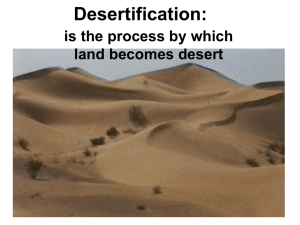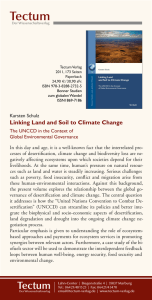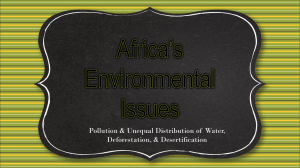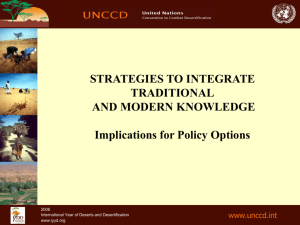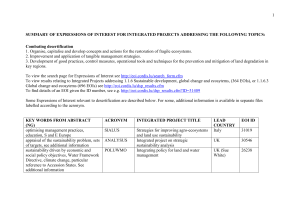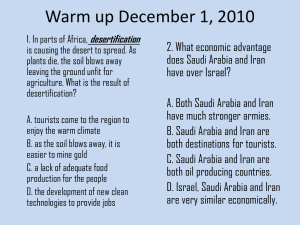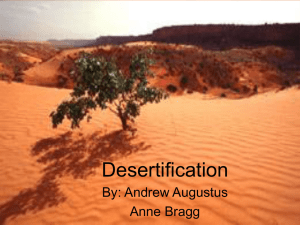Teacher Erosion Project Instructions
advertisement
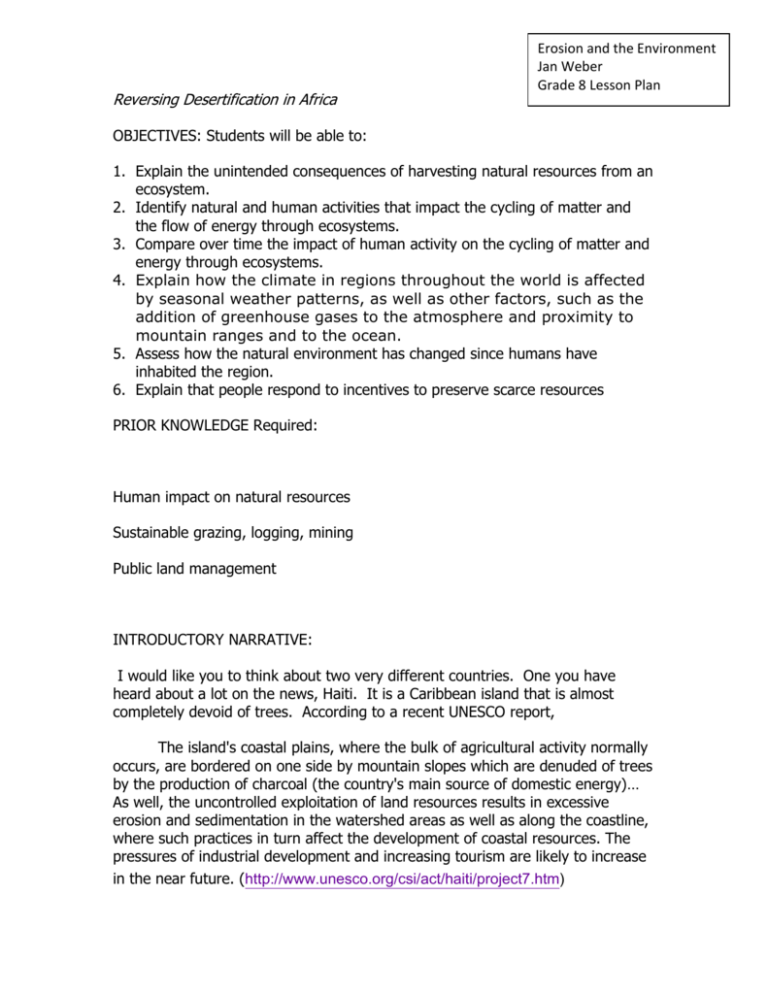
Reversing Desertification in Africa Erosion and the Environment Jan Weber Grade 8 Lesson Plan OBJECTIVES: Students will be able to: 1. Explain the unintended consequences of harvesting natural resources from an ecosystem. 2. Identify natural and human activities that impact the cycling of matter and the flow of energy through ecosystems. 3. Compare over time the impact of human activity on the cycling of matter and energy through ecosystems. 4. Explain how the climate in regions throughout the world is affected by seasonal weather patterns, as well as other factors, such as the addition of greenhouse gases to the atmosphere and proximity to mountain ranges and to the ocean. 5. Assess how the natural environment has changed since humans have inhabited the region. 6. Explain that people respond to incentives to preserve scarce resources PRIOR KNOWLEDGE Required: Human impact on natural resources Sustainable grazing, logging, mining Public land management INTRODUCTORY NARRATIVE: I would like you to think about two very different countries. One you have heard about a lot on the news, Haiti. It is a Caribbean island that is almost completely devoid of trees. According to a recent UNESCO report, The island's coastal plains, where the bulk of agricultural activity normally occurs, are bordered on one side by mountain slopes which are denuded of trees by the production of charcoal (the country's main source of domestic energy)… As well, the uncontrolled exploitation of land resources results in excessive erosion and sedimentation in the watershed areas as well as along the coastline, where such practices in turn affect the development of coastal resources. The pressures of industrial development and increasing tourism are likely to increase in the near future. (http://www.unesco.org/csi/act/haiti/project7.htm) The other country is the Dominican Republic, also in the Caribbean, but it is a lush tropical island with extensive trees and forests. From 1992 to 1999 the Dominican Republic was among the fastest growing economies in the world, registering annual GDP growth rates in excess of 6 percent. (http://www.usaid.gov/our_work/crosscutting_programs/wid/pubs/DominicanRepublic_Economic_Snapshot_Dec2005.p df) What are some possible reasons these two countries could be so different? [talk about all possible reasons then...] Now I want to tell you that these two countries are physically just two halves of the same Island ! ... PROCEDURE: 1. Research the following vocabulary words and write their definitions: Arable Land Fertile Soil Top soil Soil conservation Biodiversity Scarcity Erosion Desertification 2. Explore the following websites: a. http://www.greenfacts.org/en/desertification/index.htm#4 b. http://pubs.usgs.gov/gip/deserts/desertification/ 3. For each of the following categories, list 2 factors that impact or influence the spread of desertification: a. Social b. Political c. Economic d. Natural 4. WHAT DO YOU THINK? How can countries with limited resources prevent or reverse desertification? a. Describe 2 short-term approaches b. Describe 2 long-term approaches 5. READ THE NY TIMES ARTICLE, “IN NIGER, TREES AND CROPS TURN BACK THE DESERT.” http://www.nytimes.com/2007/02/11/world/africa/11niger.html?pagewanted=all Answer the following questions: a. What relatively small social factor changes helped to restore biodiversity and land productivity in Niger? b. What political factors (government actions) influenced the conservation of trees in Niger? c. Provide an example of the economic impact on Niger communities of property rights enforcement. d. How do climate variations affect soil erosion? CONCLUSIONS Role-Play Project


